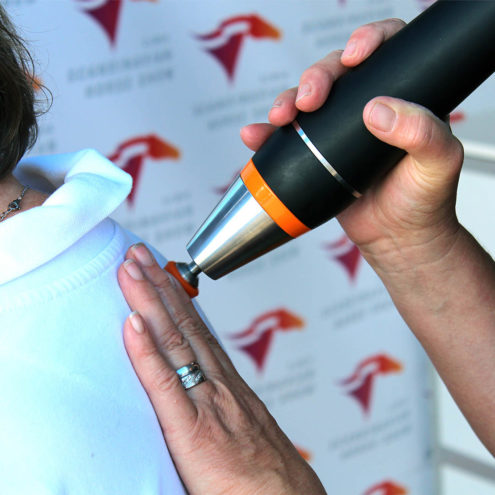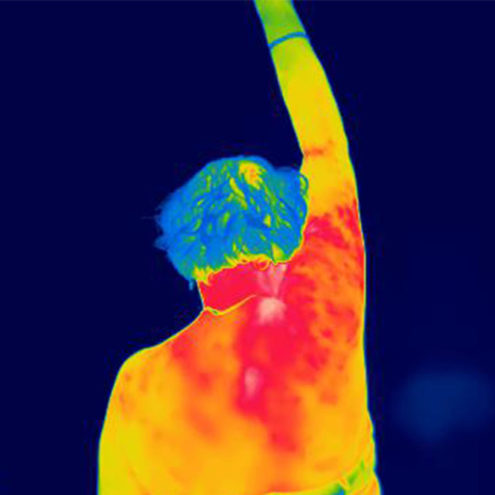Swollen wrist
A swelling of the wrist indicates an inflammation of the wrist. It can be caused by trauma, overexertion, osteoarthritis, carpal tunnel syndrome or rheumatism. Osteoarthritis is more common in finger joints than in the wrist. Trauma is common after a fall where you catch yourself with your hand. If the thumb is injured in the fall, the swelling may be in the wrist near the base of the thumb.
Inflammation is the body’s defense to heal an injury, whether the injury is due to an acute trauma or a long-lasting overexertion. It is characterized by swelling, warmth, pain, dysfunction and possibly redness (depending on the depth of the injury).
Swollen wrist – What is it?
A swollen wrist usually occurs due to an acute injury or an overexertion, learn more about overexerted wrist. It creates an inflammation in the tissues of the wrist. This can be in the joints, joint capsules, ligaments, tendons. The inflammation occurs as the body tries to heal the injury that has occurred, whether it is a large injury such as a wrist fracture or small micro-injuries due to overuse.
Symptoms of a swollen wrist?
A swollen wrist will be swollen and may feel a little fluid-filled and you will also feel a warmth over the swelling. The wrist may be painful, mainly when moving but sometimes also when resting.
What causes a swollen wrist?
A swelling occurs from an inflammation of the wrist. Inflammation means that the body mobilizes a defense to heal an injury. It can be a prolonged abrasion, overexertion, due to repetitive movements for which one is not trained, or an acute trauma. The blood supply increases and the capillaries become more permeable, allowing blood plasma to leak out to carry, among other things, white blood cells for healing. At the same time, the tissue becomes denser to ‘close in’ the injured area. Hence the swelling, which also puts increased pressure on pain receptors in the tissue. The increased activity with increased metabolism in the injured area produces the heat.
Why do I have a swollen wrist?
If you have fallen and landed on your hand, the swelling may be due to this. You may have broken a bone in one of the small bones in your wrist. If you have been performing repetitive movements for some time, you may have overworked your wrist, and you may also have carpal tunnel syndrome, which can cause a swollen wrist.
When and where should I seek treatment for a swollen wrist?
It may be useful to have the cause of the swelling investigated, for example with a plain X-ray or magnetic resonance imaging (MRI), to see if there is any skeletal damage. A broken bone in the wrist or the base of the thumb, such as a boat leg fracture, may need to be cast.
Once this has been established, treatment at a FasciaClinic is useful to get the flow and mobility going in the wrist, which speeds up healing and reduces swelling. As the swelling decreases, so does the pain. It also works in conjunction with and after a possible cast to keep the flow going, which otherwise easily stagnates completely when the wrist is locked in a cast.
How is a swollen wrist treated?
If a swollen wrist is due to a skeletal injury, it may require a cast. Treatment at a Fascia Clinic helps to get the flow going in the fascia of the wrist and reduce pressure and swelling to reduce pain and stimulate healing. The treatment is gentle, comfortable and painless.
Swollen wrist – What can I do myself?
First and foremost, you should reduce the strain on your wrist and not perform movements that trigger pain. However, if you know that there is no skeletal damage, it is good to regularly move your wrist on a daily basis to keep the flow going so that it does not stiffen. Self-massage to increase circulation and flow and thus healing ability.
Exercises for Swollen Wrist
It is important to rest and relieve the wrist in the first stage. Then, gentle movements without strain, such as reaching up towards the ceiling while angling the hand backwards. It also gets the shoulders, neck and thoracic spine moving. It is important to gently move the wrists but not to strain so that pain occurs.
 Search
Search


































